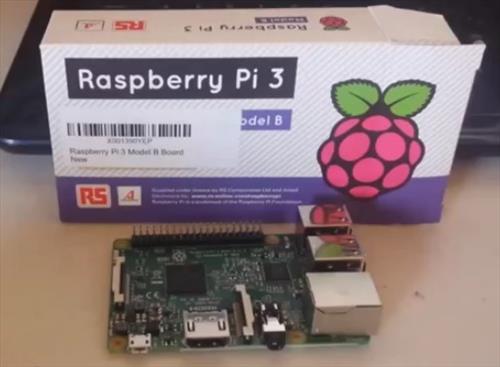Install OpenELEC on Raspberry Pi 3. After downloading both archives make sure you extract them so you have the OpenELEC.img file and the folder for Etcher like in the screenshot below and proceed with the Raspberry Pi 3 OpenELEC setup.
I got bored and decided that I would get a Rasp Pi 3, the official Kodi Raspberry Pi Case and install OpenELEC on it. This is a cheap and easy way to make your own Kodi device. Granted, it's not the most powerful device you are going to make but if you are a casual user then this could be something that is of interest to you.
Openelec
It is becoming more and more important to protect yourself online. This can easily be done using a VPN that stops your internet provider from being able to see what you are accessing online. It also removes any blocks put in place by your internet provider. They are also great for using when you are using public unsecured Wi-Fi
2 VPNs I use and can recommend are IPvanish & StrongVPN. Below are links to their websites. Both of which will give you an extra discount.
What you will need:
- Raspberry Pi
- Power Source for Pi
- Micro SD Card (16GB+)
- Micro SD Card Adaptor
- Latest version of OpenELEC for RPi
- HDMI Cable
- USB Keyboard or remote control with wireless dongle (you can get these dirt cheap on eBay or Amazon.
- Download the latest version of OE for your Pi model. The latest version can be found here (scroll down to the Raspberry Pi Builds link, click on it and select the latest RPi Disk Image download for version 1, 2 or 3)
- Now open the .img.gz file that has just downloaded by double clicking it and let your Mac extract the files - Extract to Downloads
- Place your Micro SD in the Micro SD Adaptor and place it in your Mac
- Open Terminal
- Type
diskutil listand you should see an output similar to this
- We now need to unmount the Micro SD. You obviously need to know which your SD card is - it will probably be /dev/disk2 but you can easily look at the output for the section marked size and take an educated guess at whether the size shown on there is approximately the same size as your SD card
- To unmount type the following - Remember, if it isn't disk2 then change it to the correct disk number
diskutil unmountDisk /dev/disk2
- You should now see the following message

Unmount of all volumes on disk2 was successful
- Now we want to erase the card so type the following (remember to change disk2 to the number of your disk)
sudo dd if=/dev/zero of=/dev/disk2 bs=512 count=1
- As we are using sudo you will need to enter your Mac password (please be careful and ensure the disk number is correct). You should see an output like this
- Earlier in the guide you extracted the necessary files from the .img.gz file and if you did what I said then it will be in your downloads folder
- Now we want to install those files on the Micro SD card so type the following
sudo dd if=/Users/mjd/Downloads/OpenELEC-RPi2.arm-8.0.4.img of=/dev/disk2 bs=1m
- Take a look at the output closely as you will need to make changes to suit your setup. /Users/mjd/Downloads needs to be changed to your user path /Users/YourUsername/Downloads check in your downloads folder to find the name of the .img file the latest is OpenELEC-RPi2.arm-8.0.4.img if your is different then change it to that and /dev/disk2 must be changed to /dev/disk# replacing # with the number of the disk you unmounted earlier in the guide. As we are using sudo you may be asked your Mac password again, enter it if necessary. You may need to wait a couple of minutes for the files to transfer now
- When the files are transferred you should now see an input similar to this
- OE is now installed on your Micro SD card and can be safely ejected from your Mac
- You now need to connect your USB keyboard or remote control with wireless dongle attached to the RPi otherwise you can't do anything. You also need to connect your RPi to your TV or monitor with the HDMI cable
- Now you just need to remove the Micro SD from the adaptor and place it into the Micro SD slot on your RPi, turn on (plug in) your RPi and OE will install. It will then take you to the OpenELEC wizard. With the keyboard attached you can just follow the wizard and have Kodi up and running in no time.
I recommend using a VPN to help keep yourself anonymous and protect yourself online. You can get 25% off any package from IPVanish & 20% off any Strong VPN Package which allow you to connect 5 devices to an encrypted VPN connection at any one time.
- Native apps for Android TV, Android, iOS, Mac, Linux, and more OS'
- Access all Kodi add-ons anonymously
- Tier 1 hardware (no speed slowdown)
- Prevent ISP Throttling
- Log-free, so you can’t be tracked
- 7 day money back guarantee
- The ability to be configured right at your router, for a hassle-free experience.

You can use these links to get an extra discount to try a VPN out
Installation
Where can I download OpenELEC for RPi?
You can download the latest builds from OpenELEC.tv
Where can I find instructions to install the image?
You can find instructions here.
What if I want to build my own image?
You can follow these instructions here. Note: this is only for linux OS.
A new build has come out. How can I update?
You can update via the normal OpenELEC update method. You will need to place four files (SYSTEM, SYSTEM.md5, KERNEL, KERNEL.md5) inside the Update SMB share. Then reboot and you should see the update taking place.
P.S.: As from Gotham (OpenELEC 4.0.0), you can also drop the update .tar file into the Update folder. Reboot and the update process will start.
How can I update a Pi1 sdcard to work on Pi2
Update as above but use the RPi2 tar file. Once the upgrade is complete, the system will reboot to a rainbow boot screen (as you're now booting the ARMv7 kernel). Shutdown (pull the power) and transfer the SD card into your Pi2, which will boot normally.
To go back to the Pi1: While using the Pi2, upgrade with the RPi tar. Once the upgrade is complete, the system will reboot to a rainbow boot screen (as you're now using the ARMv6 kernel). Shutdown (pull the power) and transfer the SD card into your Pi1, which will boot normally.
Hardware
Is there an issue with certain SD Cards?
You can find a list of known good cards here
What is a recommended power supply?
Install Openelec Raspberry Pi 3
It is recommend that you use a power supply that is >=1A. It is know that things may not function properly without proper power especially if you are using a keyboard or other non externally powered devices (ie. HDDs, flash drives)
Known Issues
My RPi won't play content from my LIVE TV source
Most likely is that your live TV source is sending MPEG2 video. The RPi does NOT have a licence for MPEG2 decoding. You must buy an MPEG2 licence from www.raspberrypi.com and place it in your config.txt
What can the RPi NOT play?
There is hardware support for 1080p H.264 and MPEG-4 as standard. VC-1 and MPEG-2 can be played at 1080p with an optional licence.VP6, VP8, and Theora have GPU accelerated support, but that is limited to DVD resolutions.
From Helix, other formats will be decoded in software on the ARM. This may handle SD resolutions of older codec like DivX 3, msmpeg and sorenson spark, but higher resolutions may not keep up.
All audio formats (including DTS and AC3) should be supported, but True-HD may require overclocking.
Will my RPi play full 1080P MKV rips?
YES! Raw Blu-Ray images can be played on the Pi.
You may need VC-1 or MPEG-2 licence for some Blu-Ray images. See Speed Tips section if you have stuttering issues.
Can the RPi suspend/sleep/wakeup?
The RPi has no support for wakeup/suspend/hibernate/poweroff so this cant be done. Like the most ARM devices the RPi is always on but reduces the powerusage byself if parts are not needed.
Can I speed up my RPi at all?
Yes there are a couple things you can do:
Will overclocking hurt my RPi at all?
You have to be the judge of that. It's a $35 device. Note: CHANGING THE VOLTAGE SETTINGS MAY VOID YOUR WARRANTY.
How do I overclock my PI?
By creating/editing your config.txt file and adding the following lines to it:
These settings will not void your warranty. Including force_turbo=1 gives a little more performance, but does void your warranty. You can overclock you RPi by creating a file called config.txt within the System partition of the SD card. The easiest way to do this is to mount the SD card on a PC (The card should mount in Linux, OSX, or Windows because the System partition is formatted as MSDOS). Then you can apply the correct attributes as found HERE
I'd like to try a different skin, what are my options?
Skins that work well are Metropolis, Quartz, Quartz Reloaded, Slik. Don't even try anything like Neon, Aeon MQ, or anything just as heavy it just won't work. Aeon Nox 5 is usable.